#enneagram 9
Text
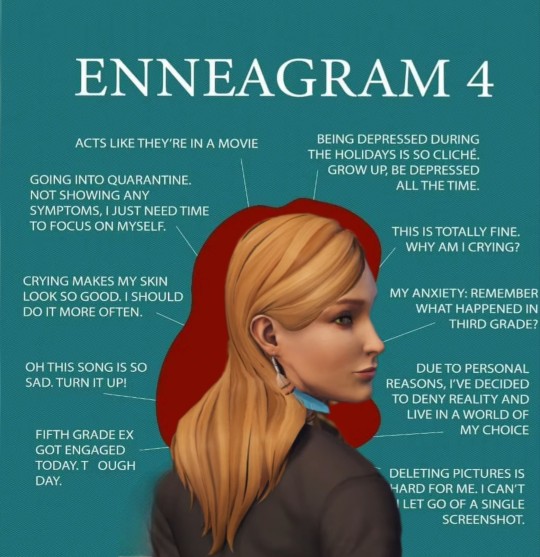

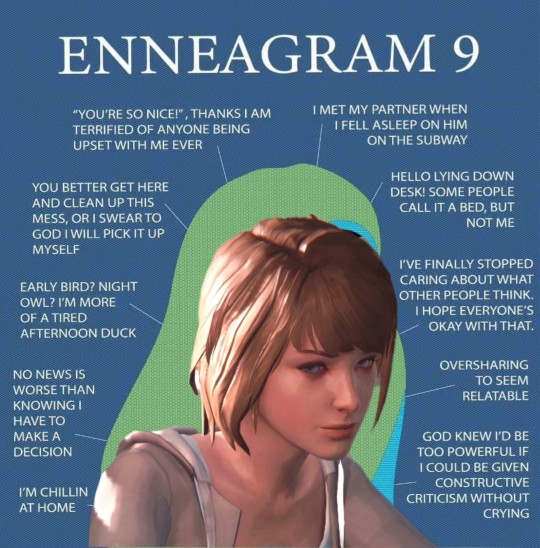
Saw these & I had to immediately
From instagram @mbtiexplained



Pretty accurate I'd say
#life is strange#rachel amber#chloe price#max caufield#lis bts#life is strange before the storm#enneagram 4#enneagram#enneagram 9#enneagram 8#chloe and rachel and max#chloe x max x rachel#amberpricefield#lis#lis: bts#lgbtq+#life is strange incorrect quotes
91 notes
·
View notes
Text
New Links
I cleaned up some of the links on the website, which temporarily made the page links invalid. These are the new Enneagram links.
Enneagram 1: The Reformer
Enneagram 2: The Helper
Enneagram 3: The Achiever
Enneagram 4: The Individualist
Enneagram 5: The Investigator
Enneagram 6: The Loyalist
Enneagram 7: The Enthusiast
Enneagram 8: The Challenger
Enneagram 9: The Peacemaker
#enneagram#enneagram 1#enneagram 2#enneagram 3#enneagram 4#enneagram 5#enneagram 6#enneagram 7#enneagram 8#enneagram 9
397 notes
·
View notes
Text
"Integration is healthy and disintegration is unhealthy" is an overly simplistic, spiritual bypassing view to throw in the bin. I'm going to invite you to view it in a different way.
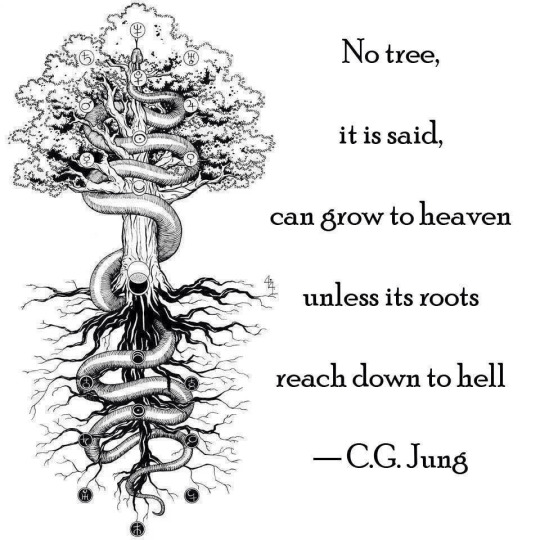

Integration is your heaven. Your light. It represents what you aspire to embody, but feel scared to embody, or cannot seem to embody no matter how hard you try. You do not have enough personal development, insight or healing to embody your integration type properly. False security is when you embody your integration type in a shallow way. You indulge in your integration type without having done enough healing to make the transformation secure, deep-rooted and long-term. You're reaching up to heaven but your roots don't reach down to hell, and so your extension is very short-lived. The excess branches you have grown to reach up to your integration type quickly die or worse, get infected, as your root system down in hell is not strong enough to sustain the tree. After periods of false security you are left with a lot of trauma, a big mess in your life, and you get pulled right back into your disintegration type's grip. You indeed can integrate in an unhealthy way... and you can also disintegrate in a healthy way. Keep reading.
Disintegration is your hell. It represents your natural stress response, your toxic coping mechanism, the thing you just really hate in yourself and in other people, your default way of overcompensating for your core type's missing pieces, your darkness. Inside your disintegration type is a wealth of secrets and wisdom that you need to uncover, including your wounded inner child. When we analyze our disintegration type and our own personal disintegration experiences, we learn a lot about ourselves. We can only learn what we are missing and what we need to work on from our disintegration type, not from our integration type. Healthy disintegration provides us the necessary foundation that we need in order to reach up towards our integration type. Disintegration is not something to be resisted the same way that cleaning your room and doing exercise is not something to be resisted just because it doesn't feel good. Conscious Disintegration is an essential part of shadow work. It is what Carl Jung would call "making the unconscious conscious".
-----
Integration and disintegration are definitely not the same. But they are also not black and white, "one is good and the other is bad". If you view it this way you are bound to bypass your necessary shadow work and end up in a cycle of false security and extreme disintegration.
#enneagram#enneagram 1#enneagram 2#enneagram 3#enneagram 4#enneagram 5#enneagram 6#enneagram 7#enneagram 8#enneagram 9#shadow work#carl jung#personality theory#typology#integration#disintegration
186 notes
·
View notes
Text
Connectinon Between Childhood Trauma and Enneagram
I've decided to share some of the stuff I learned about the childhood experience of all Enneagram types, and how this experience shapes us into a certain type. All this is based on some of my observations and studies plus backed up with some info from the books: Personality Types: Using the Enneagram for Self-Discovery by Don Richard Riso & Russ Hudon and The Enneagram Guide to Waking Up by Beatrice Chestnut.
And do keep in mind that it’s just a general pattern and observation - while it’s a lot more common for a certain type to have such a childhood experince, nothing is set in stone.
Type 1
A person could have been shaped into a One based on the experience from their early childhood where they had strict and controlling parents, which from early childhood showed the little One that they have to be responsible person, that is more mature than their peers:
Early in life, One had a painful experience of feeling criticized. When this happened, he felt pressured to conform to others’ standards of good behavior. One unconsciously tried to cope with the pain of feeling judged and punished by proactively monitoring and criticizing himself before others had a chance to. He internalized the standards others applied to him and tried to be good and do the right thing all the time. He began to feel that he had to be perfect to be seen as worthy and that he had to work hard to control himself in order to be “good.”
From: Enneagram Guide to Waking Up by Beatrice Chestnut.
Alternatively, One could have had Incompetent, naive, and/or immature parents, which showed the little 1 that they are incapable of taking care of them, so this child had to grow up too early, and become the “adult one” themselves. Type One is part of the Frustration triad, which was dissatisfied with their parental figures. They could also have been frustrated with too many rules in the family, so they developed their own vision of how things should be:
The disconnection from the protective figure, and what that person symbolized, was of central importance to the development of the superego: these children felt that they could not rely on the structure and guidelines provided by their family of origin. They may have experienced the rules of the family as arbitrary and unfair, or too strict, or too unstable. Whatever the particulars, Ones were dissatisfied and frustrated with the structure and limits that they received from the protective-figure and so felt that they had to develop their own guidelines.
From: Personality Types: Using the Enneagram for Self-Discovery by Don Richard Riso & Russ Hudon.
Type 2
All the attention and focus of type Two goes towards love and care because, as children, they felt unloved, not needed and uncared about (which is more of the case with an unhealthy childhood experience).
As Two grew up, she experienced bad feelings when some of her needs weren’t met by the people around her. Sometimes when she was hungry, no one came to feed her. Sometimes when she got hurt, no one realized she needed comfort. And when she felt her deep need for love, she often felt that she did not receive it. Two tried to find the love she needed by expressing love for the people around her. She tried to get them to take care of her by taking care of them. If she was very pleasing, helpful, and supportive of others, she thought, they would want to be very pleasing, helpful, and supportive of her. They might remember to take care of her. To get the love she needed so much, Two found herself doing all she could to please the people in her world.
From: Enneagram Guide to Waking Up by Beatrice Chestnut.
Alternatively, type Twos could have been slightly more connected to the protective figure, as opposed to the more nurturing one, or they may have grown up without a nurturing figure altogether. So Twos learned to take up on a role of a nurturing figure themselves.
Since the orientation is toward the protective figure who represents the qualities associated with patriarchy— authority, structure, discipline, guiding the child in the ways of the world—the child began to identify with the complementary, matriarchal role. Young Twos learned to become "little nurturers" as a way of gaining safety and security in the family system. In other words, they believed that if they could nurture others in their family sufficiently, they could win the affection and protection of the protective-figure. This relationship with the protective figure sets the stage for a similar orientation toward everyone who can give Twos the love they want.
From: Personality Types: Using the Enneagram for Self-Discovery by Don Richard Riso & Russ Hudon.
Type 3
The strong impulse to achieve, be better and be praised that type Three craves stems from their childhood experience, where they were only (or mostly) loved and given attention when they somehow stood out from their peers, particularly for their accomplishments.
Three saw that she was praised for what she did, not for who she was. Everyone around her got very excited and happy when she successfully completed her homework, or did a trick in gymnastics, or won a game. But when she expressed her true emotions, when she felt sad or disappointed or hurt, no one paid any attention to her at all. She felt lonely and scared when no one recognized her or cared about what she expressed from her heart. People seemed to like her when she accomplished things; but they acted as if she didn’t exist when she was just being herself. Three found a way to make sure that she wouldn’t feel alone or fearful anymore. She discovered that she had the ability to sense what people valued and then magically turn herself into exactly that.
From: Enneagram Guide to Waking Up by Beatrice Chestnut.
Alternatively, Threes are also part of an Attachment triad because they were very connected to the mother (or the mother figure) - basically, anyone that praises and admires them, showers them with gifts and compliments, and they got so attached to this person from early childhood that they learned to act in a way that will receive this positive affirmation.
As young children, Threes were connected to the nurturing figure, the person who in their early development mirrored them, cared for them, and provided affection and a sense of the Three's personal value. This person is usually the Three's mother or a mother-substitute, but not always. In some cases, the mother may have been largely absent, physically or emotionally, and it fell upon the father or a sibling to nurture the baby. In other cases, a nanny or grandparent may have fulfilled this role. In any case, it is important to understand that the nurturing figure is the person who cared for the child and who provided mirroring. In their formative years, Threes learn to tune in to the desires and hopes of their nurturing-figure. As adults, Threes continue to play out this pattern learned in early childhood. They seek out people whom they admire and esteem to give them validation and admiration.
From: Personality Types: Using the Enneagram for Self-Discovery by Don Richard Riso & Russ Hudon.
Type 4
As young children, type Four felt a loss of connection with their parents. Similar to type Two, they felt that they were unloved and not needed, but unlike Twos that were ambivalent to their parental figures, Fours felt completely disconnected from them. Moreover, type Fours started to believe (or were even directly told) that the parents are no longer connected and appreciate them because of the Four's fault, that they are somehow to blame. Maybe they were a child of a younger couple that has the kid too early and then blamed the Four, maybe claiming that them being born ruined all the opportunities for these now-parents. Four could have also started to think on their own that since the parents no longer like and care for them as much, then there must be something wrong with them, that they are not like everyone else.
Fours are disconnected from both parents. As children, they did not identify with either their mothers or their fathers. ("I am not like my mother; I am not like my father.") They may have had either unhappy or solitary childhoods as a result of their parents' marital problems, divorce, illness, or simply because of personality conflicts within the family.
From: Personality Types: Using the Enneagram for Self-Discovery by Don Richard Riso & Russ Hudon.
Even more often there could have been a sibling rivalry in the family, where Four was the older sibling, and all the attention was given to their younger sister(s)/brother(s) while they felt abandoned, so they felt the need to somehow stand out to be noticed.
A baby was born. It was as if Four’s perfect world ended. No longer was she the center of her parents’ attention. No longer was she the most special child in the world. When she wanted someone to play with or a hug, everyone was busy taking care of the baby. She felt unimportant, alone, and ordinary. Four made sense of this terrible new situation by believing that she must have done something wrong to cause the loss of connection with her parents. After all, they didn’t seem to care about her the way they did before. It must have been her fault. They must have discovered there was something wrong with her. This new baby must somehow be better. What other explanation could there be? Four’s new way of thinking caused her some pain and distress, but gradually she got used to feeling bad—and sad. And, she reasoned, if it was her fault that she had lost the connection she had once felt—maybe that meant she could do something to make things right. Maybe she could somehow make a connection with others and the world again by showing everyone how special she was— or by making them see how much she was suffering by acknowledging that she wasn’t as special as she had thought. Over time, Four tried different ways to rebuild the connection she had lost. She tried to get people to see her as special again.
From: Enneagram Guide to Waking Up by Beatrice Chestnut.
Type 5
In their early childhood, Type Fives felt an almost smothering influence of their parents: they could have been way too involved in the lives of their child, too clingy, giving them little to no privacy, and constantly invading their personal space, leaving too little room for Fives to withdraw and be left alone. That is what developed a Withdrawal stance in type Fives, as they started to realize that if they will let other people way too close, that they start to get too overly involved in other people’s lives they will also start to lose that independence and will again be overwhelmed with people’s attention and demands. So Fives learned to not only minimize their needs but to also avoid investing in a lot of relationships.
When she was young, Five tried to create true heartfelt connections with people. However, those people had a tendency to invade her space when she felt like being alone. And then they weren’t around when she really wanted them to be. Both intrusion and unavailability were a cause of constant concern for Five, which made it hard for her to know what to do to relate well to others, especially when she felt intruded upon or neglected. She secretly felt inadequate and different from others. Trying to find ways to connect with them just frustrated her. Again and again, people either left her when she felt she needed them or they didn’t allow her to be alone enough. As time went on, Five finally gave up and disconnected more and more from others and from her feelings. Five found she felt calm and comfortable when she spent time by herself.
From: Enneagram Guide to Waking Up by Beatrice Chestnut.
Not only that but too much care and attention from parents, and their clinginess made Five think that they are caring so much because the parents think that Five is incompetent and incapable to deal with their own problems, and Fives also start to believe that as well. So they started to gather knowledge and hone skills to be safe in the world and to be able to deal with problems that could arise.
Type 6
Since their early childhood Sixes were either were constantly told that the world is a dangerous place and people are unreliable, to the point that parents almost instilled fear in them: “the monsters are hiding under your bed”, “I will tell a police to come to get you if you will behave inappropriately” etc or the Sixes experienced a traumatic or life-threatening event which made them think that they always have to be careful, that the wolves are after them, things can easily go wrong, so the Six child always has to be cautious.
As Six grew up, she had a few experiences that made her feel afraid. Her mother once forgot to pick her up at school. She was frightened by a movie that showed people being killed. She started noticing all the things that could go wrong and learned that sometimes bad things happened. The world started seeming more dangerous and more threatening to her. Six became paralyzed with fear and doubt. She wanted to feel safe and carefree as she had before, but that didn’t seem possible. The world seemed like a fundamentally dangerous place. The only thing that seemed to help was to imagine all the bad things that could happen so that she could make sure they didn’t. But any feeling of safety that brought her was only temporary.
From: Enneagram Guide to Waking Up by Beatrice Chestnut.
Alternatively, Sixes may also have a strong and protective father figure, on which they relied the most, who protected them. So losing the support of such a strong father figure and being left alone in a scary world was especially terrifying for Sixes, hence why they became the Attachment type that seeks to build connections to feel safer, like with their protective figure from childhood.
As the result of their formative experiences, Sixes became connected with their protective-figures. The protective-figure was the adult in the child's early environment who provided guidelines, structure, and sometimes discipline. This was the person who occupied the traditional patriarchal position in the family. Most often this was their fathers, or a father figure, such as a grandfather or teacher, but in many cases the mother or an older sibling may actually be the protective-figure. As children, Sixes wanted the security of approval by their protective-figures, and felt anxious if they did not receive it. As they grew up, their connection with their protective-figure shifted to an identification with substitutes for this person, such as civil authorities or belief systems from which they could obtain security.
From: Personality Types: Using the Enneagram for Self-Discovery by Don Richard Riso & Russ Hudon.
Type 7
From early childhood, Sevens felt rejected by the parental figures the same way Fours may have, but while Fours felt that parents didn’t connect to them because there is something wrong with them, that the Four is somehow to blame, Sevens felt that parents were way too busy with their life and work to pay as much attention to Sevens as they may have wanted. Sometimes, parents may have even brushed them off when the Seven was in need or pain, or the parent’s indifference to the child caused the Seven that pain, so they learned to avoid the hurtful feelings as much as possible.
One day, when Seven was paying close attention to a bee that was walking on his leg, it stung him! He burst into tears and looked around for someone to comfort him. He tried to tell his father about it and perhaps receive some comfort, but his father was angry about something and told him to “go away.” So he went to his mother, but she was busy doing something and said she “didn’t have time” to hear about something so insignificant. These responses made Seven feel even more pain—almost more than he could handle.
Seven hadn’t had much experience with pain, and he didn’t like it. So, to get away from these unpleasant sensations, he retreated into his own imagination. He started thinking about things that made him excited—watching clouds as they passed through the sky or playing with his best friend. In fact, Seven found that he was good at imagining fun and interesting things. As time went on, he became adept at diverting his attention to these thoughts whenever any kind of pain threatened him.
From: Enneagram Guide to Waking Up by Beatrice Chestnut.
Alternatively, Sevens may have encountered a serious trauma as a kid, that made them feel like they would be deprived of something, so to avoid fear of being deprived they started to adopt a more gluttonous attitude, fearing that what they need to survive may be taken away from them.
Some other childhood deprivation, such as poverty, war, being orphaned, or a long illness, may have shaken their expectation that the good things of life would be given to them. There may have been an absence of the nurturing-figure at a critical stage, or some accident that shook the child's faith that he or she would be adequately supported. It may also be that Sevens naturally need a great deal of contact and stimulation which may be more than the nurturing-figure can provide. Thus, for whatever reasons, the fear of deprivation becomes the fundamental motivation for this personality type.
From: Personality Types: Using the Enneagram for Self-Discovery by Don Richard Riso & Russ Hudon.
Type 8
Type Eight’s childhood experience may resemble one of type Six, where they felt or made believe that the world is dangerous, and people are out to get them. However while Sixes developed a more neurotic and cautious stance, thinking that they will be safe if they have someone to rely on or an ideology/law to follow, type Eight decided that they will be safe if they become strong and could face these challenges themselves, without relying on anyone. Moreover, while Sixes may have had a protective figure that could defend them when needed, Eights felt no protection from their parental figures, or sometimes these parental figures may have been abusive themselves.
Early in life, Eight had an experience in which she needed protection and there was no one there to take care of her. Sometimes there were things she just couldn’t do by herself, even though she was bright and capable for someone so young. The people in her life that were bigger than she was didn’t seem to notice when she needed to be cared for, listened to, or fed. And a few times, when one of the older kids hurt her, no one saw that she was little and needed protection. So Eight learned—the hard way—that she had to take care of herself. If no one else was going to do it, it would have to be her job. She would have to get big—fast! (Too fast.) She would have to be strong. She would have to be powerful, even though she was still small. Sometimes people around her fought, and they didn’t notice she was scared. So she would have to be fearless, in addition to being big, and strong, and powerful.
From: Enneagram Guide to Waking Up by Beatrice Chestnut.
Also, Eight could have had the opposite childhood experience from Twos, where Twos had a stronger protective figure so they had to become the nurturer, Eights had a stronger nurturing figure, so they decided that they need to become the protective figure themselves.
Eights learned that they could maintain some kind of connection with the nurturing-figure and fit into the family system by functioning in a role that was complementary to the nurturing-figure. The nurturing-figure represented (and therefore "owned") the qualities associated with motherhood: warmth, caring, nurturance, approval, gentleness, and sensitivity. Thus, the Eight identified with the complementary patriarchal role, and learned that the best way to get some sense of value, affection, and nurturance was to be "the strong one," the little protector, the one that others turn to for strength and guidance, especially in a crisis.
From: Personality Types: Using the Enneagram for Self-Discovery by Don Richard Riso & Russ Hudon.
Type 9
At some point in their childhood, Nines felt that their desires, wishes and opinions are not important or listened to. When they tried to express what they wanted, their parents may have shut that desire off, bruising it aside, or choosing for them under the pretence that they know better. At first, Nine could have protested against that, but when they started to understand that the more they protest the more arguments and conflicts it will cause, damaging their relationship with the parents, the more they began thinking that maybe what they want is not worth all the drama and discord that disrupts their inner peace. Instead, it was better to go along with what others wanted, and find comfort in other parts of life.
Nine woke up one day feeling alone and disconnected. He felt frustrated at having been left by himself and wanted to register a protest against whoever had pushed him out on his own. But this made him even more uncomfortable. There were others nearby, but they seemed somehow distant. This new sense of being separate felt lonely and scary. If he was no longer connected to the world around him, how could he feel any sense of belonging? When Nine tried to complain about this new and disturbing situation in order to re-establish his connection with others, no one would listen. Those around him spoke louder and had more important things to say. They knew what they wanted and argued to get it. They didn’t seem bothered by the fact that they were separate—and that their arguing made them more so. They didn’t seem to care what Nine was saying. He tried speaking louder and protesting more, but no one paid attention. After a while, he simply gave up. If they weren’t going to listen, he might as well go back to sleep. At least there was comfort in sleep.
From: Enneagram Guide to Waking Up by Beatrice Chestnut.
Alternatively, Nines could have lived in a very intense or unhealthy environment, that damaged them emotionally. So in order to keep their peace and sanity in one piece, they learned to numb their feelings, to protect themselves.
If their early childhood was torn by strife and dysfunction, holding all of the painful and conflicted feelings and messages inside them was almost intolerable, so average to unhealthy Nines learned to dissociate—to remove themselves from the immediacy of their feelings and thoughts so that the inner turmoil they absorbed did not overwhelm them. At the same time, they learned to tune out the conflicts and pain of the external environment, a strategy familiar to many children. This is like the young person who blocks out the sound of her parents fighting in another room by singing a song to herself or remembering happier time.
From: Personality Types: Using the Enneagram for Self-Discovery by Don Richard Riso & Russ Hudon.
#enneagram#enneagram 1#enneagram 2#enneagram 3#enneagram 4#enneagram 5#enneagram 6#enneagram 7#enneagram 8#enneagram 9
556 notes
·
View notes
Text
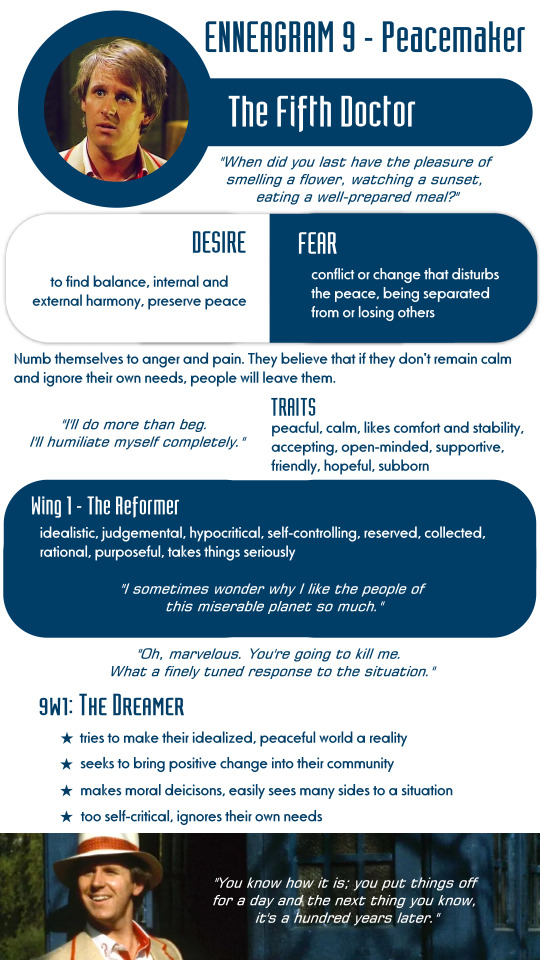
Enneagram - The Doctors
First Doctor | Second Doctor | Third Doctor | Fourth Doctor | Fifth Doctor | Sixth Doctor | Tenth Doctor | Eleventh Doctor | Twelfth Doctor
The Companions: Jamie McCrimmon | Rose Tyler | Captain Jack Harkness | Donna Noble | River Song | Amy Pond | Rory Williams | Bill Potts
27 notes
·
View notes
Text
All Enneagram Guides
Gut Types (9-8-1)
https://www.tumblr.com/blueopinions49/714684054949298176/understanding-type-9?source=share
https://www.tumblr.com/blueopinions49/713776928726958080/understanding-type-8?source=share
https://www.tumblr.com/blueopinions49/715329872464150528/understanding-type-1?source=share
Head Types (7-6-5)
https://www.tumblr.com/blueopinions49/713157696877199360/understanding-type-7?source=share
https://www.tumblr.com/blueopinions49/712508568147984384/understanding-type-6?source=share
https://www.tumblr.com/blueopinions49/712065601858895872/understanding-type-5?source=share
Heart Types (4-3-2)
https://www.tumblr.com/blueopinions49/710605851536326656/understanding-type-4-pt-1?source=share
https://www.tumblr.com/blueopinions49/711239964250324992/introduction-this-is-a-rantinformative-post-on?source=share
https://www.tumblr.com/blueopinions49/710152882517884928/understanding-type-3?source=share
https://www.tumblr.com/blueopinions49/708805690950565888/understanding-type-2?source=share
“The Instinctual Drives and The Enneagram”- John Lukovich 2021
#mbti#zodiac#zodic signs#personality types#16 personalities#ennegram#mbti personality types#enneagram#personality typology#typology#mbti thoughts#mbti things#enneagram 9#enneagram 5#enneagram 4#enneagram 6#enneatypes#enneagram 7#enneagram 3#enneagram 1#enneagram 2#enneagram 8#enneagram 1w2#2w3#3w4#4w5#5w6#6w5#7w8#8w7
117 notes
·
View notes
Text

CRITICAL ROLE: BELL'S HELLS (2021–) ENNEAGRAM TYPES ★
Orym of the Air Ashari – Type 9(w1): The Negotiator
Nines are accepting, trusting, and stable. They are usually creative, empathetic, optimistic, reassuring, and supportive, but can also be too willing to go along with others to keep the peace. They can bring people together and heal conflicts, but they can also be complacent. They typically have problems with inertia.
Nines are devoted to the quest for internal and external peace for themselves and for others. They work to maintain their peace of mind just as they work to establish peace and harmony in their world. Nines can have the strength of eights, the sense of fun and adventure of sevens, the dutifulness of sixes, the intellectualism of fives, the creativity of fours, the attractiveness of threes, the generosity of twos, and the idealism of ones.
9w1s can easily come to conclusions and make decisions: if something isn’t good, they will let people know. They’re easygoing and kind, and usually know exactly what to say to calm and embrace others. Their strengths come from their ability to be open-hearted and open-minded: they don’t feel the need to always be right, but they always want to be fair and do the right thing. They give themselves to the world to make it a better place.
Sources: 1 2
#orym of the air ashari#orym#halfling#fighter#bell's hells#critical role#dungeons and dragons#dnd#d&d#enneagram#enneagram type#enneagram type 9#enneagram type nine#enneagram 9#enneagram nine#type 9#type nine#9#nine#art#digital art#photoshop#graphic design#graphic#artists on tumblr#artist on tumblr#annemarieyeretzian
43 notes
·
View notes
Text
A poem for each EnneaType.
By Melissa Kircher, transcribed from @enneagrampaths.
A poem for EnneaType 1
and failure
isn't failing
it's actually an event
creating space
for new life
to burst into wild reality
A poem for EnneaType 2
the soot and ash
a charcoal facade
behind which
two eyes, glowing
watch out
she burns hot
A poem for EnneaType 3
I think poetry
might be inside you
the words there
ready to tumble out
I think the stars
shine only for you tonight
and the earth turns
to keep you on it
A poem for EnneaType 4
if I let out the pain
I said
it will shatter galaxies
that's fine
she replied
I made lots of them
you can break a few
A poem for EnneaType 5
stay
anchor in the depths
every drop in the ocean
sings for your presence
here. now.
A poem for EnneaType 6
opening like petals
rooted like pines
woven back whole
one thread at a time
stretching up, out, down
new rhythms like rhyme
mothered soul tender
finding child eyes
dancing forest wild
tasting deep like prophets wise
A poem for EnneaType 7
the sun hanging by a thread
details that weigh mountains
I want to find you again
the girl in the tutu that sparkled
and when I do
pulling you into my lap
I'll whisper
you already knew
the wisdom of the Universe
A poem for EnneaType 8
strong is two feet solid
in the soil
toes curled into the loam
strong is letting pain
sweep through your branches
and losing some leaves
strong is allowing the shadows to
surround you
to change you
and then
gently letting them pass
A poem for EnneaType 9
what could I do?
these were my people
so I went
I entered their anguish
I felt their relation
and then I understood
the spectrum of my own heart
#poetry#melissa kircher#enneagram#enneagram 1#enneagram 2#enneagram 3#enneagram 4#enneagram 5#enneagram 6#enneagram 7#enneagram 8#enneagram 9
78 notes
·
View notes
Text
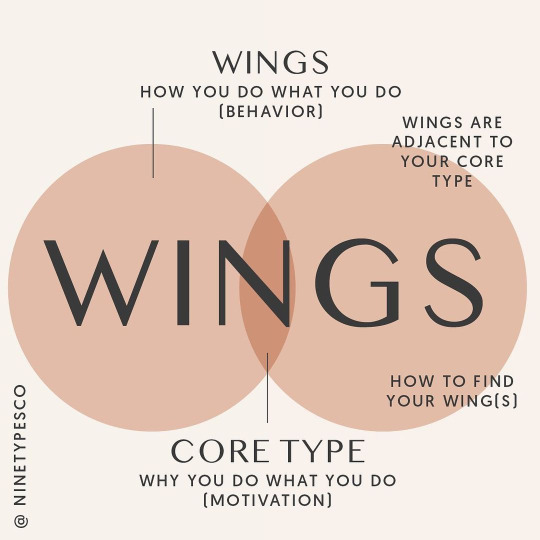



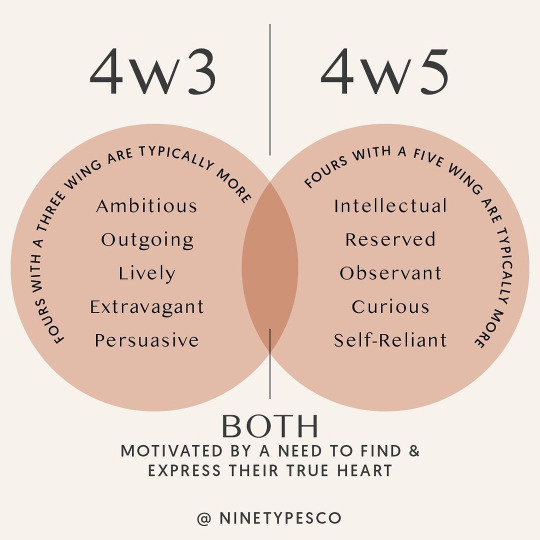
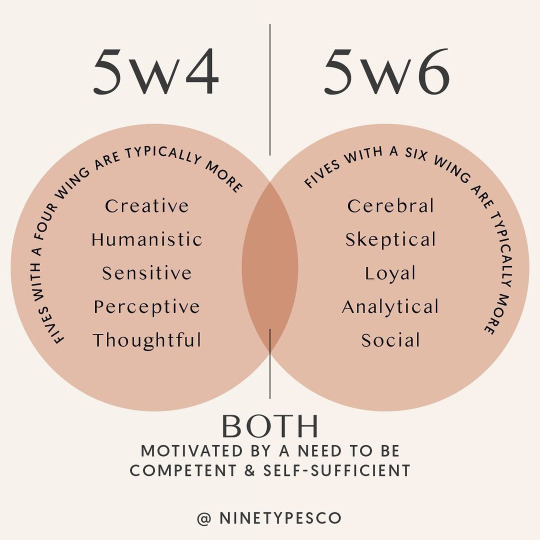
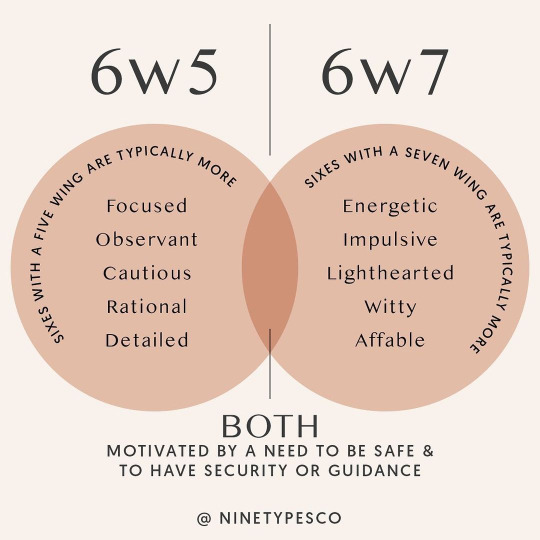

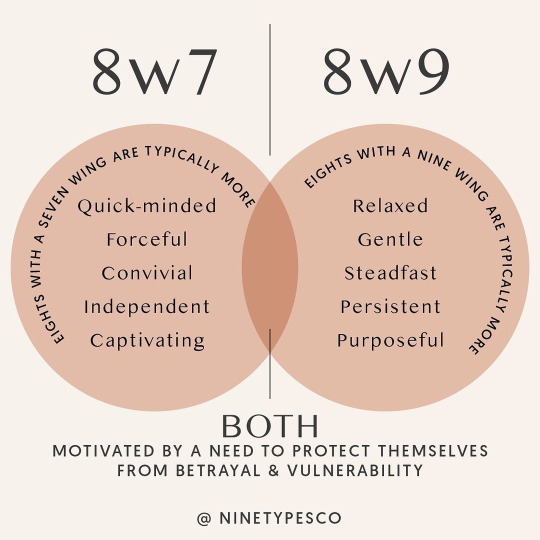
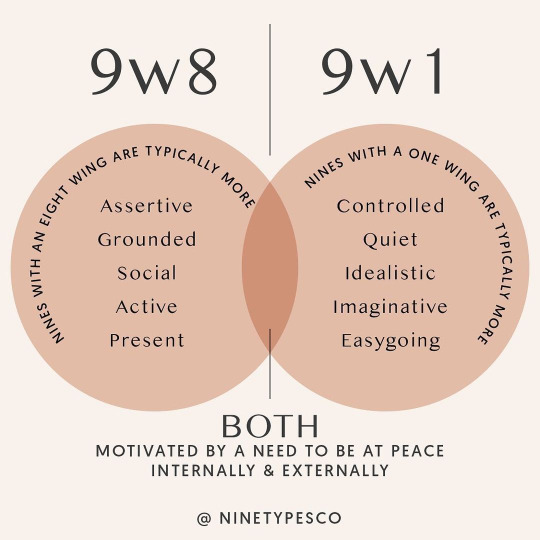
Wings. From NineTypesCo by Steph Barron Hall.
#steph barron hall#ninetypesco#enneagram#enneagram 1#enneagram 2#enneagram 3#enneagram 4#enneagram 5#enneagram 6#enneagram 7#enneagram 8#enneagram 9#wings
32 notes
·
View notes
Text

#enneagram#enneatypes#enneagram 1#enneagram 2#enneagram 3#enneagram 4#enneagram 5#enneagram 6#enneagram 7#enneagram 8#enneagram 9
247 notes
·
View notes
Text
Enneagram Meems - prt 2

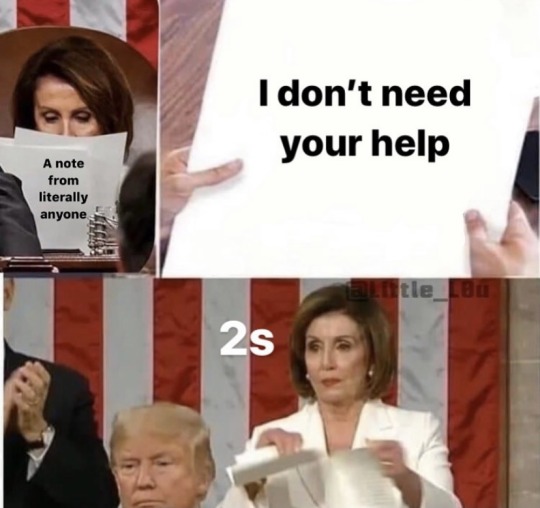
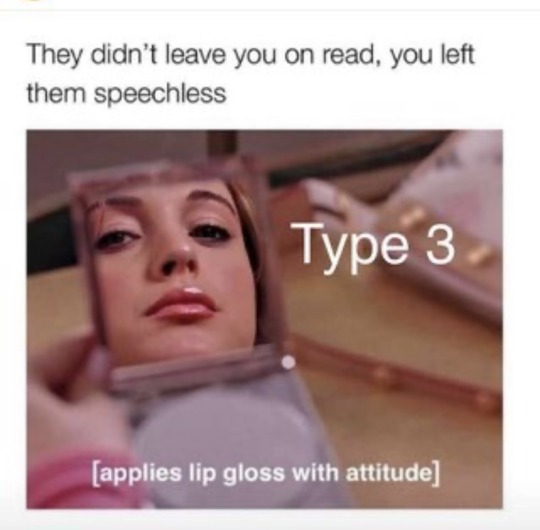
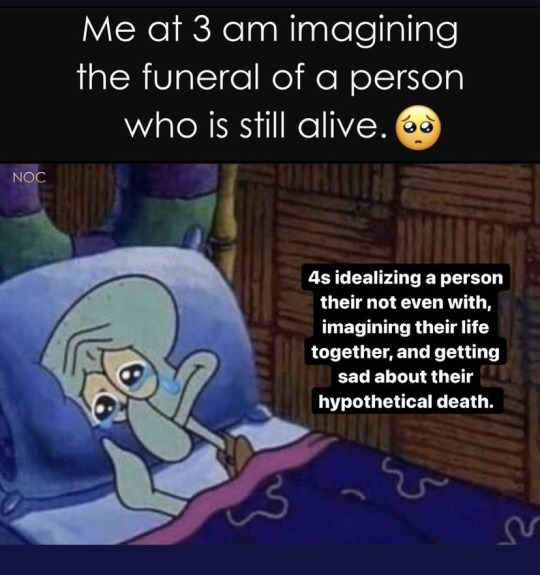

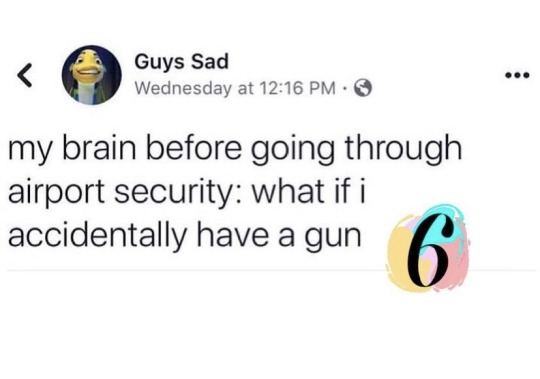
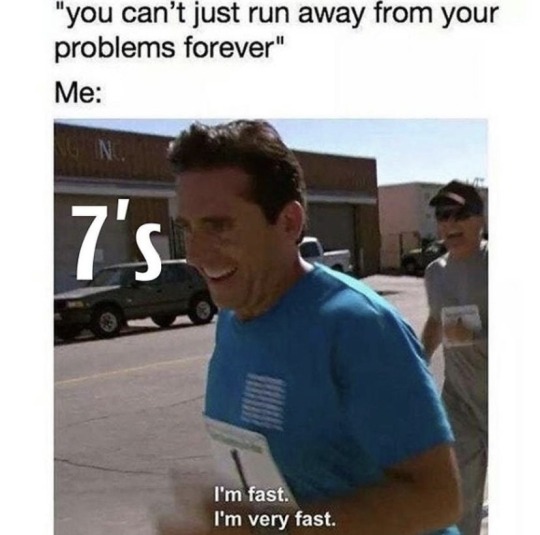


#memes#funny#laugh#haha#enneagram#enneagram memes#enneagram 1#enneagram 2#enneagram 3#enneagram 4#enneagram 5#enneagram 6#enneagram 7#enneagram 8#enneagram 9#1w2#1w9#2w1#2w3#3w2#3w4#4w3#4w5#5w4#5w6#6w7#7w6#7w8#8w7#8w9
101 notes
·
View notes
Text
The Enneagram Explained ⚔️ Defence Mechanisms & Self-Sabotaging Behaviors 💣🔪
By Larissa
(This is an excerpt from a workshop I taught in 2023) If you want the accompanying "Unf*ck Yourself" mini workshop + pdf workbook join the membership and get it instantly. I apologize for how dry and cringe the names/descriptions are.
To watch/listen instead:
youtube
One of the main ways you can stop operating out of autopilot, quit the shit patterns and actually get what you want is by:
Being with the discomfort of not operating out of your personality trap + shadow (being conscious, making different choices, regulating your nervous system in the moment with breath, tapping, affirmations).
Integrating the opposite of your personality's "belief" (the shadow).
This sounds simple but it actually requires a considerable amount of bravery and determination. Which is why most people who learn the Enneagram don’t actually use it for self-growth. Because it’s more fun to chit chat about and study than to actually apply to our own lives.
The personality’s belief structure creates behaviors and defense mechanisms. These beliefs and behaviors create the shadow.
The defense mechanisms come from Freud's psychoanalytic theories and have been correlated to Enneagram theory by multiple sources and evolved over time with other people's ideas (Fritz Perls, Oscar Ichazo, Helen Palmer, Naranjo, etc). I won’t be getting into any of that, I’m just going to apply them in how I see them as useful. I’ve also added behaviors that I notice in each of the types.
I’m not sharing these to shame anyone or be judgmental, because we’re ALL doing at least one, if not three or more of these patterns. I’m using the Enneagram as a framework to show you how to spot patterns, unuseful beliefs and shadow at a much quicker pace than if you’re just doing it from just generic journaling prompts or waiting for something to “happen” before you address it. This way you have a pathway to start looking at the problems before your life goes to total shit.
Each type’s flawed belief (“If I am not ___ I don’t exist /I am not me/I am not safe”) manifests itself through behaviors and actions.
This process is unconscious. Even if you were aware that you were doing some of this stuff, it’s not your fault. It’s what we were programmed to do. But by integrating our shadow and coming into acceptance and wholeness we get to make better choices, think supportive thoughts, feel better, more useful and aligned feelings. And you can also catch yourself in the act and check yourself before you wreck yourself.
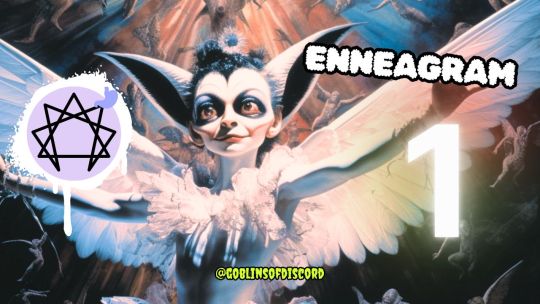
ENNEAGRAM TYPE 1 - “DADDY”
1’s prefer to see themselves as being conscientious and above the degenerate riff raff. They’re proper, correct and in integrity, therefore they cannot see themselves as lazy, foolish, wrong, messy or "bad.” Of course, when going too hard into the personality type’s false belief, it creates a big ol’ shadow.
1’s avoid outwardly expressing anger to remain “objective” and in control. Because expressing “anger” is “bad.” To be imperfect, incompetent, wrong or out-of-control is death to the 1. This mechanism reinforces the 1's ego because it assures them that they are right, proper, perfect, and correct. Therefore, their survival and identity continues. However, because the 1 is an anger/gut type, they’re constantly churning irritation factories.
If the 1 catches themselves in the act, or someone else does (gasp), it may increase the dissonance between the Shadow and Unintegrated Self if they don’t understand that it’s just their personality bs. Because the 1 utilizes “anger” they are unlikely to allow themselves to see themselves as incorrect, in the wrong, imperfect.
How this manifests:
Reaction Formation: 1’s can express the opposite of their actual feelings and desires. They do this to reinforce their ego as “not being angry” (being perfect, right, correct, proper, good). Expressing anger is “bad” or what people who have no self-control do.
Channeling unexpressed anger into physical activities - going hog wild on cleaning, obsessively exercising, restricting food/hedonistic delights, perfectionism fixations, taking a red pen to their life.
Criticality + judgmental concerns projected onto people around them, for their “own good.” To the 1 they’re being responsible, doing the right thing.
Splitting: Seeing things in black and white under stress (this is good, this is evil). In super low health this can lead to extreme behaviors, like witch-hunting, finger-pointing, being the ‘voice of God’ / judge, jury and executioner.
Rationalization: 1's can rationalize to justify their self-righteousness. “This is the most correct, right, or efficient way to do the thing, therefore I am right and you are wrong.” If you don’t do what I say, it will be to your own detriment.
Hypocrisy: Projecting their own denied desires, feelings and even private behaviors by condemning the same desires, feelings and behaviors in others. They know the right way to be, and you are not being it. They can become preachy about whatever they take issue with, in order to unconsciously overcompensate for their secret bad behavior or naughty thoughts. This ties directly to Shadow Work, because 1's and 1-fixers can have a pungent Shadow full of all kinds of misdeeds and “dark” desires, but be totally blind to them while criticizing others for the same things.
Example: The anti-gay politician who is having an affair with a man, or the barbiturate-poppin' mom who wages a neighborhood campaign against drugs.
OCD: Obsessively creating more order and rightness in their physical environment, relationships, or self. They can go into “perfecting” mode in order to feel in control of something they cannot control, where they exert order onto their surroundings and right wrongs (like becoming obsessed with cleanliness in their home or laying out ‘rules’ that others must follow).
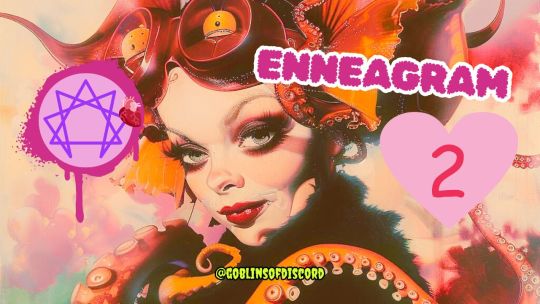
ENNEAGRAM TYPE 2 - “MOMMY”
2’s prefer to see themselves as being loving, nurturing, selfless, self-sacrificing, caring towards others, concerned and kind-hearted. Therefore they cannot see themselves as selfish, self-centered, giving to get, cold, heartless or "bad”. Of course, when going too hard into the personality type’s false belief, it creates a big ol’ shadow.
2’s avoid feeling selfish or needy, by refusing to directly ask to get their needs met or receive what they truly wish from others. 2's unconsciously repress these needs and desires to reinforce their type's ego because it assures them that they are self-sacrificing, needed, good and loving. Therefore their survival continues.
If the 2 catches themselves in the act, or someone else does (gasp), it may increase the dissonance between the Shadow and Unintegrated Self if they don’t understand that it’s just their personality bs. Because the 2 utilizes “pride” they are unlikely to allow themselves to wallow or even acknowledge any wrongdoing or selfishness on their part. It’s the other person’s fault, the 2 is blameless.
How this manifests:
Repression: 2’s hide their needs and "selfish" desires from themselves in order to maintain their caring and indispensable self-image. They use Repression to AVOID feeling needy, unnecessary or rejected. Because of their type structure, they can't see how they are in need of anyone else's help or how they are anything other than self-sacrificing. They cover up these feelings with flattery, offers of help, being intrusive and overly nice.
2’s prioritize others’ needs in the hopes someone will prioritize theirs. But then when that happens, the 2 goes into rejection mode and wants to get back into position as ‘the helper’ as that’s where their identity is invested.
The 2 projects their needs onto those around them by being overly helpful or intrusive. If they feel like they're not being appreciated or getting their needs met, they can move into covertly "punishing" behaviors to the person they keep giving to or subconsciously create situations in which the person might be forced to give back to them.
Example: The 2 wants help cleaning from their spouse, so over-cleans to the point where they become ill so that their partner is forced to pick up the slack or show them care for all of their self-sacrificing. This can also manifest in ways like them offering to do something and then making the other person wait to receive if they are feeling secretly resentful or not shown adequate appreciation or having their self-image adequately validated.
In low health, 2’s can use “Identification” to take on the needs and worries of those around them as if it’s theirs. They become fretful over other people’s problems. Anything that hurts their loved one hurts them. And it becomes covertly narcissistic, wherein they can make someone else’s suffering about themselves, but also their wins. “If it wasn’t for my help, they wouldn’t have accomplished that.” They can secretly (or not secretly) want undue credit for “help” they’ve provided (whether solicited or not).
2’s use “Reframing” in collaboration with “Repression.” They can reframe their intentions (to maintain a pride in their pure and loving intentions) and reframe others intentions too, lest it burst the sugar-coated bubble they’re desiring to live in or reflect back to them that they’re unwanted.
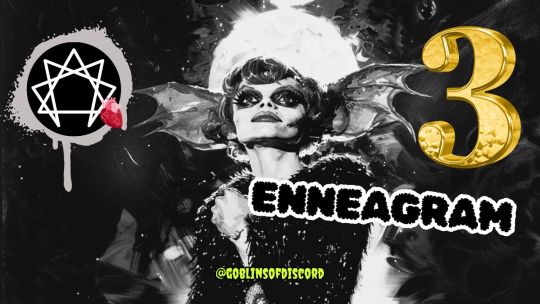
ENNEAGRAM TYPE 3 - “SHAPESHIFTER”
3’s like to see themselves as impressive, competent, successful and admired or valued for what they do or are. Therefore they cannot see themselves as losers, failures, or less than others. Of course, when going too hard into the personality type’s false belief, it creates a big ol’ shadow.
3’s avoid feeling like a failure or worthless by adapting to external ideals, competing, and striving. 3's unconsciously use “Identification” to reinforce their type's ego because it assures them that they are valuable, worthy, admired and successful. Therefore their survival continues.
If the 3 catches themselves in the act, or someone else does (gasp), it may increase the dissonance between the Shadow and Unintegrated Self if they don’t understand that it’s just their personality bs. Because the 3 utilizes “deceit” they are unlikely to allow themselves to own their failings or true feelings if it interferes with the image they’re projecting.
How this manifests:
3's use "Identification" as a defense mechanism, by unconsciously assimilating with the "other." They use this to avoid feeling like a failure. How this shows up is that they take on the traits, characteristics, attributes, aesthetics, preferences, values and mannerisms of important people in their life, groups, people they see as valuable and those they admire or envy. They do this to create an image of success (to themselves and/or others).
Denial/Projection: 3’s can blame others for their failures or what isn’t working for them, offloading image fails onto others to distance themselves from shame. Just like they can take on others traits/behaviors/stories, they can offload those same things onto others as well.
Deception: This collection of traits is their "self image" and where their ego and self-worth resides, and because their external sources and what is valued may change, it can give 3's a shapeshifter quality depending on who or what they're surrounded by, what they value, what they do. Underneath this layer of shiny baubles is still a 'shame type' and so without this sometimes fragile self-image being upheld they are but a raw, shameful nerve. Because of this, they can lose contact with their own internal compass, needs, desires and their authentic self. They prioritize what gets them those positive hits and bolsters their ego/self-image. They can be totally asleep to this inner incongruence, and be deceiving themselves, especially in lower levels of health.
Numbing/Workaholism: 3’s can use numbing so they don’t get stuck in the emotional swamp and become unproductive. They can power down the “I’m a failure, I’m upset, I’m emotional” aspect and power up the drive to override emotional slop that might get in their way. They might override this with going hard into working around the clock, substances, shopping/spending a lot or doing something flashy to bolster their self-image.
Competition: 3’s can get caught up in competition, using others as a stepping stone or a way to boost their own image by comparison (“see how much better of a job I’m doing than Ted.”) They might do this to the point where they end up chasing someone else’s dreams and totally shooting themselves in the foot.
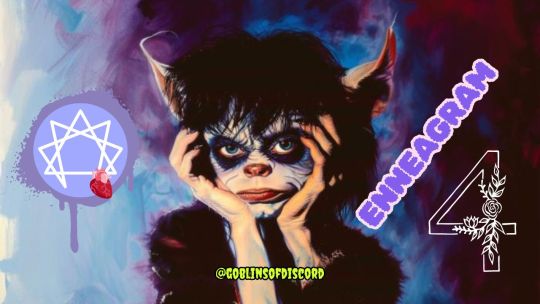
ENNEAGRAM TYPE 4 - “DISDAINFUL DEPRESSIVE”
4’s like to see themselves as separate, uniquely flawed, deep, and the special exception. Therefore they cannot see themselves as mundane, relatable, ordinary, adaptable, or even for many 4’s functional. Of course, when going too hard into the personality type’s false belief, it creates a big ol’ shadow.
4’s avoid feeling mundane, ordinary, relatable, shallow, functional or happy. 4's unconsciously self-sabotage and focus on the negative and what’s frustrating, to reinforce their type's ego because it assures them that they are deep, different, uniquely flawed and unlike anyone else. Therefore their survival continues.
If the 4 catches themselves in the act, or someone else does (gasp), it may increase the dissonance between the Shadow and Unintegrated Self if they don’t understand that it’s just their personality bs. Because the 4 utilizes envy (what is missing) they are unlikely to allow themselves to see where they are functional, relatable, understandable or even happy. They subconsciously craft a self-image that rejects any "positive" information about themselves that comes into conflict with this existing "negative" image.
How this manifests:
Introjection: Introjection is presented as absorbing another person's identity or feelings (like a parent) and transferring it to themselves. However, it's more nuanced and specific than that for 4’s. 4's aren't just taking in any old information, they're unconsciously taking in evidence that they are broken, estranged, alien, fucked up and damaged - and this is great news to them. While the external world may be giving the 4 fuel, their experience has almost nothing to do with the outside world. The outside world is just serving to fuel the 4's internal narrative. The 4 weaves these evidentiary mementos into a story. They identify with specific negative traits that reinforce that they are separate, rare, deeply flawed so as to never quite be understood or capable of being happy and functional.
They do this unconsciously as a way to cope with the pain of feeling broken, unwanted, dysfunctional and different. They weave the negative narratives into their identity and shape it into a way that makes them feel in control of it, to project depth and meaning onto it vs someone or something outside of themselves creating their story and making it shallow. The more they associate into this negative state, the more dysfunctional they can become and the more it supports their type's ego structure. Without these narratives they feel naked and non-existant. Because their self-image is inherently negative, they are “positively” associated with being in a negative, frustrated, unsatisfied state.
Idealization: Idealizing people or situations as a way to generate feelings to pull the 4 away from the mundane reality/experience. This idealization is a frustration pattern designed to keep them in a loop of disappointment and longing because nothing will ever live up to what they hope, something will always be missing and the 4 can never truly actualize or be happy as a result. And if it is everything they’ve ever wanted, the 4 is likely to find something wrong anyway or create a problem where there is none.
As a result, the 4 might self-sabotage opportunities that would actually aid them in being functional, capable, happy, or get them what they claim they want. They may discard things, people, ideas, pursuits if they feel too easy, cheap, relatable, mundane. Or keep churning up issues and provocations that will lead to them being able to say, “see, I never get to have what I want.” Or “I knew no one would understand.”
Splitting: 4’s reject what’s “not me” and often find what’s not to their tastes or “not me” disgusting. Everything that’s not in the frustrated realm that the 4 approves of is superficial, shallow, ugly, vapid, horrible, etc. For the faceless masses, not the 4. Being at odds with reality helps reinforce their self-identity. I’m not like that, therefore I’m deep.
Because 4’s are usually creative or self-identify with the idea of being an artist/writer/creative, their tragically romantic, broken and disdainful views can be expressed through their art. They may overdo it in making it unpalatable or abstract. Or if they become popular they may self-sabotage their own success or self-image by being provocative, turning on their fans/the public, becoming moody, self-destructive or unpredictable. They’ll likely move away from what is expected or desired by their fanbase, even if they secretly desire an audience. Or maybe they’ll over-specify how they present themselves and shroud themselves in mystery in a way that others cannot easily relate to, they can only *bear witness.*

ENNEAGRAM TYPE 5 - “BRUNDLEFLY”
5’s like to see themselves as insightful, competent, self-sufficient, independent and objective. Therefore they cannot see themselves as emotional, human, helpless or dependent on others. Of course, when going too hard into the personality type’s false belief, it creates a big ol’ shadow.
5’s avoid feeling dependent on others, helpless, depleted, or engulfed in the messy world. 5's unconsciously retreat inwards and withhold energy and information, detach, and compartmentalize to reinforce their type's ego because it assures them that they are competent, objective, smarter than everyone else and above the mortal coil.
Because the 5 utilizes avarice (hoarding inner resources) they are unlikely to allow themselves to allow themselves to be put in a position where they are “needed” for anything outside of the scope of their specific interest/competency focus, or entangle themselves with hot messes (people or situations). Of all the types, this is maybe the one that is least likely to give a shit if they have a shadow, tbh.
How this manifests:
Isolation: 5’s retreat and protect their inner sanctum from being invaded or picked clean by the outside world. They use isolation to avoid dependence on others or having to be interlaced with their chaotic whims and needs which may disrupt what the 5 would rather be doing with their time (some kind of mind pursuit). They may design their entire lives to protect themselves against intrusion.
Detachment: 5’s use detachment as a means to cope when they feel overwhelmed. They disconnect from and retreat from their own and others’ unstable feelings. In order to feel competent and safe and conserve their mental resources, they can cut all contact or need for the outside world.
They use ‘rejection’ methods of cutting off and compartmentalizing to ensure they’re not swallowed up in the messy ass human bullshit of this humdrum existence. This may show up as minimizing their needs (physical, relational, financial, emotional). They’re the most likely to live in some secret, off-grid tiny home. Not the one with all the gardens and crops and goats, but the one that has the bare minimum to survive where they can focus on their studies or whatever their mental obsession is, far away from other people.
They can have totally hidden worlds within worlds that others know nothing about. Each world dangerously close to being lopped off at a moment’s notice if the 5 sees no use for it anymore. They dump all of their energy into their main pursuit because it’s where they feel “safe” and valuable, and so the outside world interfering with that feels like an attack on their very existence. By overdoing this one area of “competency” they can actually make themselves unable to actually be independent or functional. So to them they may seem overly competent, but to the outside world they may seem bizarre and dysfunctional.
5’s use compartmentalization of emotions, energy, and relationships. Separating their thoughts from feelings, and putting people into boxes to be dealt with or utilized instead of truly connected to. This can have a dehumanizing effect on the people around them who don’t want to only interact with the 5 when they have the inner resources or only interact with them on narrow and specific terms. By doing this, the 5 effectively shuts out having to deal with whatever they don’t want to but also hacks off pieces of their own heart, spirit, and humanity which is the only true place to create and mine for the insights and independence they seek.

ENNEAGRAM TYPE 6 - “CITIZEN EMO”
6’s like to see themselves as loyal, hardworking, just a regular person, authentic, responsible, fair and connected to the family/community/tribe, etc. Therefore they cannot see themselves as bad, traitorous, pompous or “too good.” Of course, when going too hard into the personality type’s false belief, it creates a big ol’ shadow.
6’s avoid feeling unsafe, uncertain or abandoned in their attachments and support systems (physical, group, partner). 6's unconsciously seek security/safety (and dangers), truth (and lies) and support systems they can trust and rely on to reinforce their type's ego because it assures them that they are accepted, part of the tribe, safe, secure, supported and prepared. Therefore their survival continues.
If the 6 catches themselves in the act, or someone else does (gasp), it may increase the dissonance between the Shadow and Unintegrated Self if they don’t understand that it’s just their personality bs. Because the 6 utilizes “fear” (and anxiety) they are unlikely to allow themselves to relax, ease up, stop hunting for discrepancies or what could go wrong.
How this manifests:
Projection: 6’s project their worst fears and worst case intentions onto other people. They’re always sniffing out danger in the world and in their connections. Who’s being disloyal? Who’s up to no good? They can engage in investigative, gossipy behaviors, seeking out clues of their worst fears. Sometimes they project their own behaviors, feelings and thoughts onto others and then fear being blamed or accused (which leads to projecting).
On the flipside, they can project idolization fantasies onto “experts”, simping people who they can put all their trust and outsource their thinking to. They do this to create certainty within themselves.
Worst Case Scenario: Projections can also show up as “predictions” where the 6 may anticipate the worst and then by overfocusing on this negative outcome, they manifest it into reality. Their worst case scenario becomes a self-fulfilling prophecy. (“See! I knew the basement was going to flood!” Or “See! I knew you’d cheat on me!”) This churning distrust has them always on the hunt, and never feeling safe.
Splitting: Like other types they can see things in “black and white”, good or bad, you’re with me or against me. 6’s can be tribal and overly-identified to their “side” - whether that’s ideologically, politically, religiously or just in their general friend groups.
Outsourcing anxiety: They can overdose on anxiety in order to reach equilibrium. They project their internal anxieties into the outside world in the hopes that someone else will solve the problem for them. Like constantly bringing people’s attention to the negative or what could go wrong. They cannot rest until someone else validates and matches their concern. They want help to deal with the problem (real or imagined) and for someone else to assuage their fears.
Redirect overwhelming fears from one source onto another source that they feel is easier to manage (like a loved one, peer, boss).
Rebellion: 6’s can get anti-authoritarian when their trust is broken, they’re disappointed, or they engage in “splitting.” They can be mega social justice warriors and fight for what is “right”, but in doing so they can totally lose perspective and go so hard in fighting for justice that they actually become the bad guy.
6’s can also be hypochondriacs with their anxiety. Excessive worrying, creating symptoms and scenarios out of the ether. They can circle the drain, fixating on problem after potential problem. They can literally bring forth a potential health catastrophe into reality with constant focus on it. This paranoia can manifest in many ways, but sometimes they’re right!
Self-deprecation: They also may use self-deprecation or humor, or presenting as an “underdog” as a way to deflect being targeted or being seen as too big for their britches. They can project this onto other with a ‘tall poppies’ or ‘crabs in the bucket’ mentality.
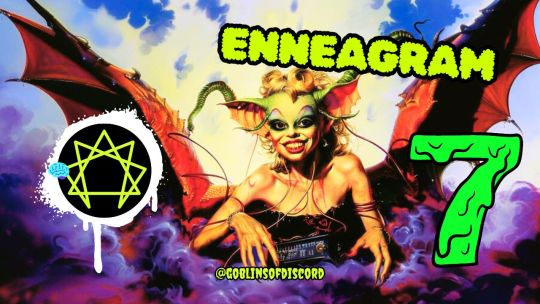
ENNEAGRAM TYPE 7 - “MAD HATTER HEDONIST”
7’s like to see themselves as interesting, exciting, innovative, individualistic, creative and fun. Therefore they cannot see themselves as boring, normal, part of the grind or a downer. Of course, when going too hard into the personality type’s false belief, it creates a big ol’ shadow.
7’s avoid feeling trapped, limited, stifled, cut off and bored. 7's unconsciously seek new, interesting people/things/situations/interests to reinforce their type's ego because it assures them that they are fascinating, buoyant, original and compelling creatures. Therefore their survival continues.
Because the 7 utilizes “gluttony” they are unlikely to allow themselves to stagnate for too long, moving onto the next thing and the next thing and the next thing.
How this manifests:
Rationalization: Which means the 7 can subconsciously (or consciously) rationalize away shitty behaviors and dodge responsibility. They are usually averse to their specific flavours of what is “painful” and will reframe reframe reframe themselves up up up and away from whatever that source of “pain” is. Whether it’s the guilt of doing something awful, or the fall-out of saying something flippantly, or the consequences of a thoughtless action. They’re especially prone to rationalizing if making the pain conscious means they’re not able to do, be or have something they desire.
Distraction: They go into distraction seeking mode via hedonism, intellectual stimulation, adventures, extreme sports, partying, being totally manic and creating for 3 days straight, shopping, etc when they want to avoid discomfort, pain, boredom.
Repression: They use repression to bury negative emotions (in whatever flavour they despise) and push away anything that makes them feel like they’ve been victimized. 7’s can be emotional and melodramatic but it’s in the flavour they find the most interesting. They’re not here to be a boring victim or cry themselves to sleep every night over a loser.
Anticipation/Planning: They can over idealize an outcome to the point where they are more about getting the dopamine hits off anticipation than actually doing the thing or seeing whatever their harebrained scheme is through to completion.
Entitlement: 7’s can be massive brats about getting what they want. As frustration types they’re often focused on what they don’t have and what they want, but because they’re assertive they’re more likely to chase after it, expect it to be given to them, or push people out of the way to get it.
Pleasure-seeking/Hedonism: 7’s reject that which is not pleasurable because there’s nothing in it for them. When 7’s get into this “thank you, next” pattern it can become impossible for them to actualize or stick to something long enough for them to enjoy the fruits of all their initial excitement. The sparkle fades and there’s nothing tasty for the 7 to stick around and lick, so they’re likely to start looking for something else.
Rebellion: Like 6’s, 7’s can also be rebellious, but their reasons for rebelling are likely centered around freedom (literally or freedom of expression), anti-censorship, pro-individuality/individual choice. They can also just rebel for the hell of it if they’re bored, or if there are hot people associated with a cause.

ENNEAGRAM TYPE 8 - “FINAL BOSS”
8’s like to see themselves as powerful, invulnerable, independent, intimidating IDGAF leaders. Therefore they cannot see themselves as weak, under someone else’s heel, being controlled, powerless or soft. Of course, when going too hard into the personality type’s false belief, it creates a big ol’ shadow.
8’s avoid feeling weak, vulnerable, powerless, small or allowing anything to threaten them. 8's unconsciously deny vulnerabilities and weaknesses to reinforce their type's ego because it assures them that they are indeed powerful and no one can or will fuck with them. Therefore their survival continues.
Because the 8 utilizes “lust” they are unlikely to allow themselves to put themselves in a position where they could be steamrolled, deprived, slowed down or made small or powerless.
How this manifests:
Denial: 8’s use “Denial” by rejecting their own vulnerabilities or weaknesses. This can show up as denying emotions, fears, thoughts that don’t serve the 8’s ego identification of being powerful. They can also completely deny the existence of any perceived weak points that an “enemy” could use against them. If possible, they will lop off anyone or anything that causes them agitation (people, situations) or seems like a threat to their inner or outer sanctuary that they’ve created.
Rejection/Coldness: They can view softness and receptivity as death. If they weaken for a moment, they’ll get screwed over or tricked.
Reaction Formation: 8’s can express the opposite of how they feel. So they can feel really hurt but act like they’re emotionally impervious. You have no effect on the 8. You don’t matter. If you’ve wounded their steel heart, you’ll pay the price. Like the 7 they can deny victimhood, but they might personally feel quite slighted and seek revenge to get the ball back in their court, the power back in their hands, for how the person made them feel.
Aggression/assertiveness: 8’s can take up space and project an air of confidence in order to pre-defend against would-be attacks. Showing up with big bear or chaos demon energy ensures no one will fuck with them and that they’ll get what they want. Therefore they can be domineering, bossy, straight-shooters. My way or the highway.
Control/conquering: 8’s can be hyper controlling and even paranoid, depending on their position and the situation. They can take on the role of puppetmaster or dictator, to ensure things happen according to their plan and they’re not at the whims of someone else or underneath someone else’s thumb.
Justification: 8’s can be impulsive with their anger and feeling absolutely justified. The desired effect can be to crush whatever is pissing them off with their brutality and force.
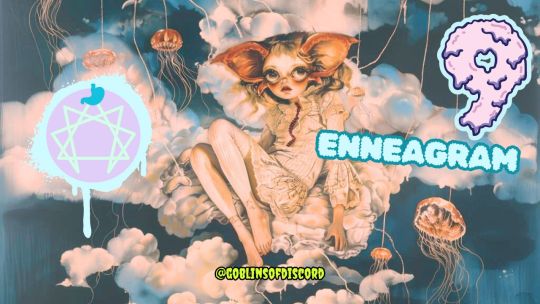
ENNEAGRAM TYPE 9 - “SOOTHING SQUISH”
9’s like to see themselves as chill, empathetic, caring, supportive and deep. Therefore they cannot see themselves as provocative, disruptive, thoughtless, aggressive or selfish. Of course, when going too hard into the personality type’s false belief, it creates a big ol’ shadow.
9’s avoid feeling in conflict and stressed out. 9's unconsciously seek to be in harmony and flow with those around them and their environment to reinforce their type's ego because it assures them that they are chill, harmonious and connected.
If the 9 catches themselves in the act, or someone else does (gasp), it may increase the dissonance between the Shadow and Unintegrated Self if they don’t understand that it’s just their personality bs. Because the 9 utilizes “sloth” they are unlikely to allow themselves to just get after it, make demands, make bold moves.
How this manifests:
Narcotization/Dissociation: 9’s use narcotization which means to numb, to ease discomfort. This can manifest in multiple ways, falling asleep at the wheel of life - outsourcing decisions, independence, physical needs, to others. It can also show up as losing yourself in mindless side-tasks instead of just dealing with problems. They can dissociate from problems by numbing their heart and mind to what’s in front of them, or to just hope it resolves itself without any involvement or disruption to the 9’s existence.
9’s repress their anger in favor of keeping peace. They can be really annoyed and not able to verbalize it until it reaches a crisis point for the 9. The other person may be totally shocked when it happens, especially if the 9 kept telling them that everything was fine.
Passive Aggression: 9’s express how they feel indirectly and hoping the person picks up on their subtle cues without them having to generate conflict. This can also just slip out subconsciously through offhand comments, looks, tone or behaviors. And when confronted with it, they’ll likely recede into a mist and say nothing’s wrong.
9’s can also use “positive reframing”, not unlike 7, but theirs is more used as a numbing agent, smoothing out a dire situation or other people’s malintent, rudeness, or shitty behavior so it doesn’t result in conflict or upset.
Outsourcing: 9’s often give their power away, instead of asking for what they want or expressing themselves without being prompted. They can become disappointed when others fail to mind-read or intuit their needs without them having to assert themselves or vocalize it.
Self-Forgetting: Because 9’s can dance around their location in order to keep the peace and not lose connection, they can forget what they want or how they really feel about something.
Merging: Like 3’s, 9’s merge with the people around them, often taking on their interests, aesthetics, values and even mannerisms. However the 9 isn’t doing it to become an ideal and compete for validation, they do it because they over-identify with the idealized other to create harmony and melt into them.
7’s and 9’s can both procrastinate and get lost in multiple fantasies of possibilities, but the difference is that the 7 is likely taking an active, assertive approach and throwing spaghetti at the wall, whereas the 9’s dreams can fade away if they don’t have another person holding them accountable or a job to show up for or something external.
Ghosting: Instead of just saying “no,” often 9’s will be vague or give a “maybe” or “sure” if they don’t know their location in the moment or don’t want to rock the boat. And then they’ll disappear when followed up with.
SELF-REFLECTION PROMPTS (FOR JOURNALING)
Did you cringe at any of the behaviors listed? did you recognize any of these in yourself?
write out which ones you recognized. no judgment. it's not "you", it's just behaviors Created out of your personality's false belief. Unpack them. go back to the situation. what were you feeling at the time? what was running through your mind?
What did you need to know in that moment to feel totally safe and make a different choice?
What different choice can you make next time?
What would be the worst thing someone could say about you or make you feel?
Is there anything in your life that you can see as you trying to avoid this being said about you, control people's perceptions, or avoiding feeling?
Can you accept this behavior in yourself right now, forgive yourself, and choose to be more consciously aware?
If you want the accompanying "Unf*ck Yourself" mini workshop + pdf workbook join the membership and get it instantly. I apologize for how dry this is. Want to get typed or coached by me? Book here.
#enneagram#enneagram types#enneagram 4#enneagram 7#enneagram 8#enneagram 3#enneagram 9#enneagram 6#enneagram 2#enneagram 1#enneagram 5#Youtube
17 notes
·
View notes
Text
Enneagram notes list
Just some enneagram notes. Not an expert. May change later.
___
Enneagram system
Some sources
Enneagram types overview/basics
1 | 2 | 3 | 4 | 5 | 6 | 7 | 8 | 9
___
Other lists:
MBTI Notes
Kpop idol typology
#enneagram#enneagram notes#enneagram types#enneagram 1#enneagram 2#enneagram 3#enneagram 4#enneagram 5#enneagram 6#enneagram 7#enneagram 8#enneagram 9#typology#typology notes#enneagram system#masterlist
38 notes
·
View notes
Text
9s
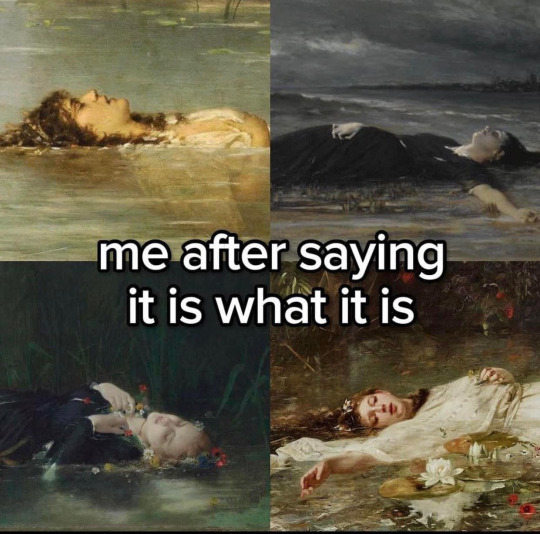
#enneagram 9#9w8#9w1#type 9#typology#enneagram#personality theory#8w9#1w9#withdrawn triad#optimist triad#positive triad#attachment triad
115 notes
·
View notes
Text
My thoughts on The Raven Cycle Enneagram types:
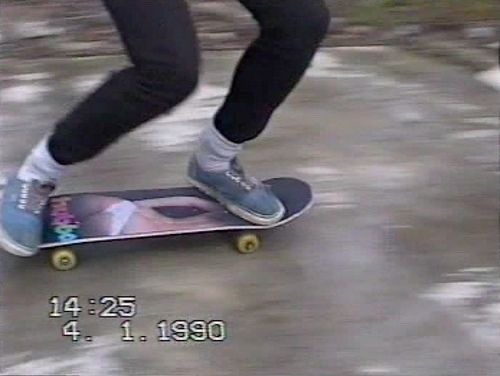
Noah - Type 9(w8)
I always try to go by core desires, but I think this one is pretty obvious from the moment we meet Noah. 9s desire peace, and everything Noah does is related to making a more comfortable environment for him and his friends. He’s the one person who asks Gansey how he truly feels and takes Ronan seriously, and he tries to lighten the Blue/Adam situation even though it’s painful for him. He never burdens everyone else with his own pain (although I wish he would :(, he deserves to be taken care of too), and I feel like that’s so truly 9. I’m a little unsure on his wing but I think 8 makes sense given his history with Whelk and multiple girlfriends and not caring too much about morals. Also, after watching ATLA and noticing Aang’s 7ish behavior in the earlier seasons, and him totally being a 9, I think it really makes sense for Noah too.

Blue - Type 5(w4)
Blue is typed as a 4 most of the time, just based on her desire to be different, but I don’t really think that’s her desire. 4s also typically feel insecure about their differences, but Blue is never ashamed of being the psychic’s daughter. She definitely has 4 tendencies, with the baseline of being different from other people and using those differences as a strength. But I think her desire to be sensible, and also wanting to explore the world and find “something more” is very 5core. She wants to understand the world around her, but the things she wants to understand aren’t typical things. That for me is what cements her as a 5w4.

Adam - Type 8(w9)
I’ve already talked about this before, but Adam is probably the most well-characterized 8w9 I’ve ever read about. Lots of people say he’s a 3 because he’s very ambitious, but 3s care a lot about their image, and while Adam is insecure about his upbringing and how he appears, he doesn’t do anything about that. It’s not like he tries to look like Gansey to be more successful, because that’s just not who he is. He never pretends to be something he’s not. He doesn’t accept help from Gansey and always tries to do things by himself. He takes Gansey’s pity as a weakness and feels pathetic when he gets as angry as his father. 8w9s typically demonize the rage of 8w7s, and are much more calculating, which definitely fits Adam. Most importantly, though, Adam wants freedom. He doesn’t see money and success as something that will necessarily make him valuable to society, but something that will get him what he wants. He wants to “be his own master”. “The most important thing to Adam Parrish had always been free will”.

Gansey - Type 3(w2)
Gansey’s is one of the most interesting characterizations I’ve analyzed. I talked about this before too, but he has this core pride and knows that he’s better than a lot of the people surrounding him, but he’s always trying to even the scales and help other people. 3w2s to me seem like people who think they’re destined for greatness and want greatness but are almost tied down to the people around them. Gansey as a 3w2 is definitely really obvious, but that core pride warring with that desire to help people and be a better person is so fascinating. It’s that need to make an impact and find something so special and wondrous, but use that to help people, and not hurt anyone in the process.

Ronan - Type 7(w8)
Ronan is usually typed as an 8, but here’s my proof that he’s a 7: 7s in stress move towards 1, and become critical and idealistic, unsatisfied with everything and constantly tearing other people down because they haven’t processed their own sadness. 8s move towards 5, and become cold and calculating, preferring to do things strictly by themselves and disassociate from the people around them (like Adam). Ronan’s character arc surrounds his grief, his sadness, and that hole in his heart is always temporarily filled. But Ronan, on the inside, is such a sweet kid. That scene in the Dream Thieves with the mouse? Where he’s talking about how cute it is and then remembers how he used to play with them when he was a kid and his family was so perfect and how it’s not anymore, and then says “whatever it’ll be dead in like a day, lifespan’s shit for field mice” because he doesn’t want to process anything?? Peak 7 behavior.
Anywayyyy those are just my updated thoughts all put together
#the raven cycle#the raven boys#blue Sargent#Ronan lynch#Adam Parrish#richard gansey iii#richard gansey#richard campbell gansey the third#richard campbell gansey iii#enneagram types#enneagram#mbti#personality types#personality#enneagram 8#enneagram 3#enneagram 5#enneagram 9#enneagram 7
10 notes
·
View notes
Text
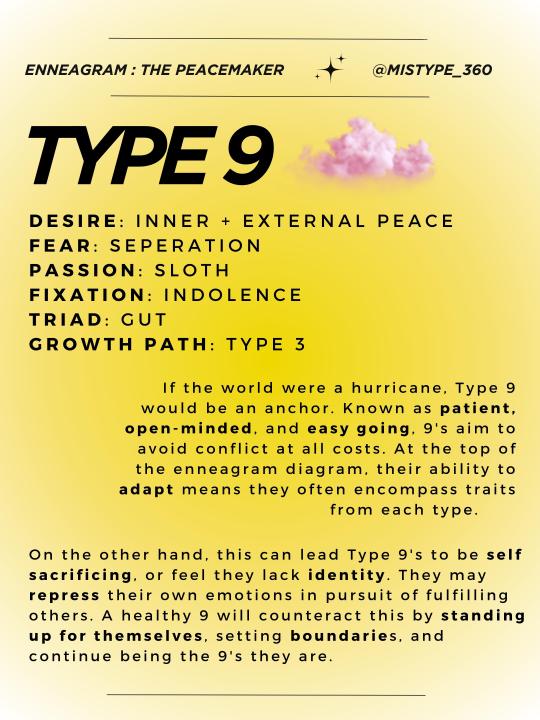
19 notes
·
View notes